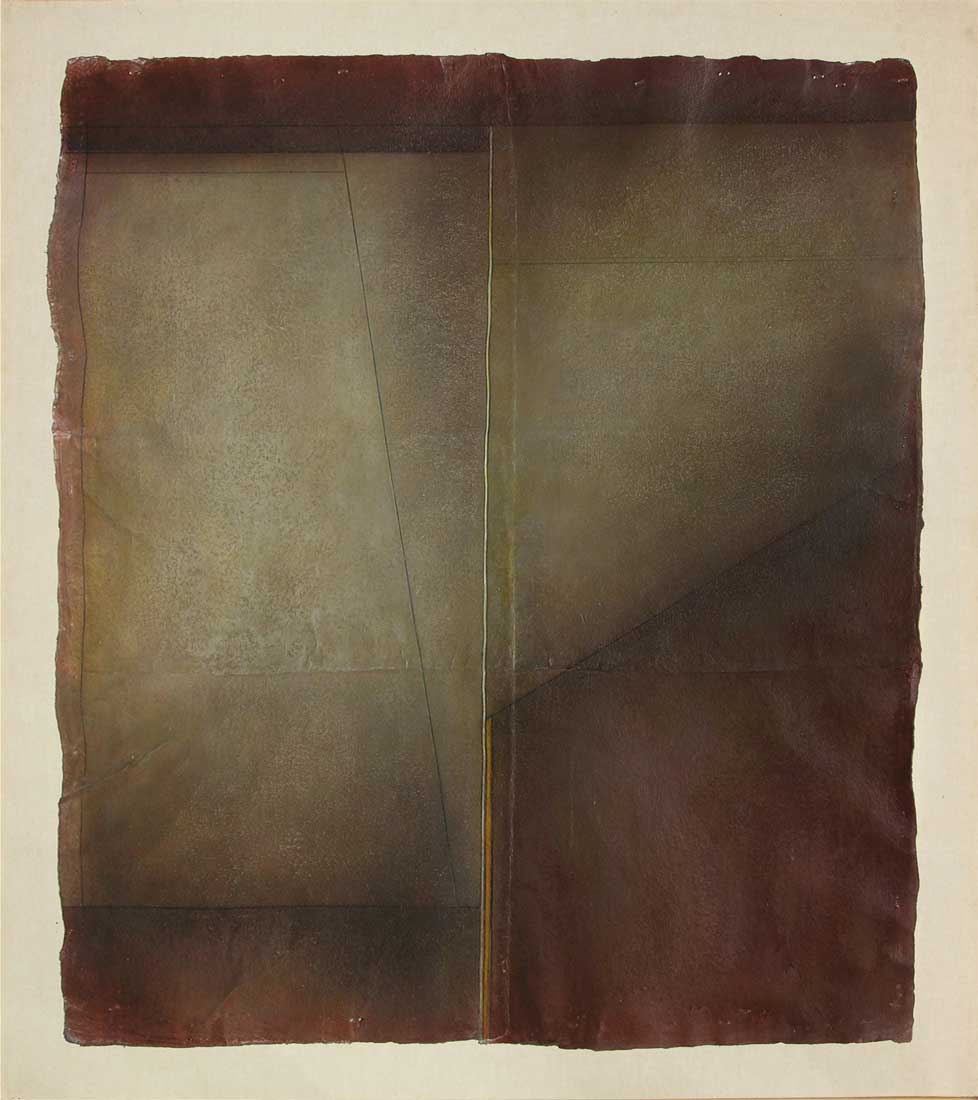
It’s Complicated: Mehlli Gobhai’s Relationship with Colour - Ranjit Hoskote & Nancy Adajania
Mehlli Gobhai (1931-2018) was best known to his viewers through his dark paintings of the 1990s and early 2000s, penumbral canvases and works on paper rendered in umber, burnt sienna, lignite, and blue-grey, each work a field incised with spare lines of energy, often marked in chalky white or yellow. The darkness of these works – coupled with the artist’s insistence on using extremely subdued lighting during his exhibitions, and his often-stated polemical antagonism towards colour – has given rise to the misconception that Gobhai’s late work was monochromatic. In the classic Renaissance face-off between colore and disegno – the Venetian love of painterly colour and drama on the one hand and the Florentine pursuit of drawing and an axial linearity on the other – Gobhai would be seen as an exponent of pure disegno. Nothing could be further than the truth. An engagement with the sumptuousness of chroma, whether to embrace it or subdue it, was an integral feature of Gobhai’s art throughout his life.
Viewers who walked into our retrospective of Gobhai’s work at the National Gallery of Modern Art (NGMA), Mumbai – a survey of nearly seven decades of his work, which we playfully titled DON’T ASK ME ABOUT COLOUR/ Mujhse rang ki baat naa karo – were shocked to see his radiantly polychrome mixed-media paintings of the 1970s on the ground floor. In these works, mint green, cobalt blue, poster red, sunny yellow, and vivid pink came together in festive constellations. Gradually, we showed how this celebration of chroma gave way, in Gobhai’s handling, to the pensive silences of black, white, brown, and plum that distinguished his spare, plumb-line paintings of the 1980s. During the 1980s, too, the robustly artisanal side of Gobhai’s sensibility led him to experiment with aluminium powder, powdered pigments, and acrylic, layering colour and darkness into a series of small-scale works that look like meditations on the night sky.
From the 1990s onwards, Gobhai’s twin impulses – to embrace colour and to subdue it – converged into a synthesis. The underlayers of Gobhai’s dark works were pale pink, chalky white, tan, or yellow. We calibrated our lighting to reveal Gobhai’s complex handling of colour. In paintings like the untitled work (acrylic and mixed media on paper, 2000) that has been graciously loaned for the retrospective by the Jehangir Nicholson Art Foundation (JNAF), this calibrated lighting allows the tawny underlayer to spring up in a field of scintillations from beneath the painting’s burnished leather-like surface. The yellow plumb line that marks the painting’s axis mundi gains signal-like resolution. The axis, with its unvarying emphasis on ascension, acts in interplay with the shifting chromatic values of the field. Colour, as we see when we walk through the galleries of the NGMA Mumbai, was voice to Gobhai: a voice that announced itself in varying registers, now con brio, now sotto voce, now forte, now pianissimo. It was never silent, never absent.
*
Mehlli Gobhai was on the Advisory Committee for JNAF, and had curated "Nothing is Absolute" along with Ranjit Hoskote at the gallery in 2013.
*